
 Data Structure
Data Structure Networking
Networking RDBMS
RDBMS Operating System
Operating System Java
Java MS Excel
MS Excel iOS
iOS HTML
HTML CSS
CSS Android
Android Python
Python C Programming
C Programming C++
C++ C#
C# MongoDB
MongoDB MySQL
MySQL Javascript
Javascript PHP
PHP
- Selected Reading
- UPSC IAS Exams Notes
- Developer's Best Practices
- Questions and Answers
- Effective Resume Writing
- HR Interview Questions
- Computer Glossary
- Who is Who
How to Create a Bi-Directional Bar Chart in Excel?
In order to compare numbers across many categories and graphically display data, bar charts are frequently used. Even while typical bar charts are good at showing positive numbers, there are occasions when we need to show both positive and negative values in the same chart. For these situations, a bi-directional bar chart, sometimes referred to as a diverging bar chart, is quite useful. With the zero point serving as the reference, it enables us to display both positive and negative values on the same axis. Positive and negative values are represented by various colours, making it simple to spot patterns, variations, and comparisons in our data.
Regardless of your level of Excel proficiency, this course will arm you with the knowledge and abilities needed to master bi-directional bar charts. So let's get going and see how to make stunning bi-directional bar charts in Excel to improve your data visualisation skills!
Create a Bi-Directional Bar Chart in Excel
Here, we will first create a chart and then format the chart to complete the task. So let us see a simple process to learn how you can create a bi-directional bar chart in Excel.
Step 1
Consider an excel sheet where you have required data to create a chart.
First, select the range of cells, then click on insert and select bar chart.
Select Cells > Insert > Bar Chart.
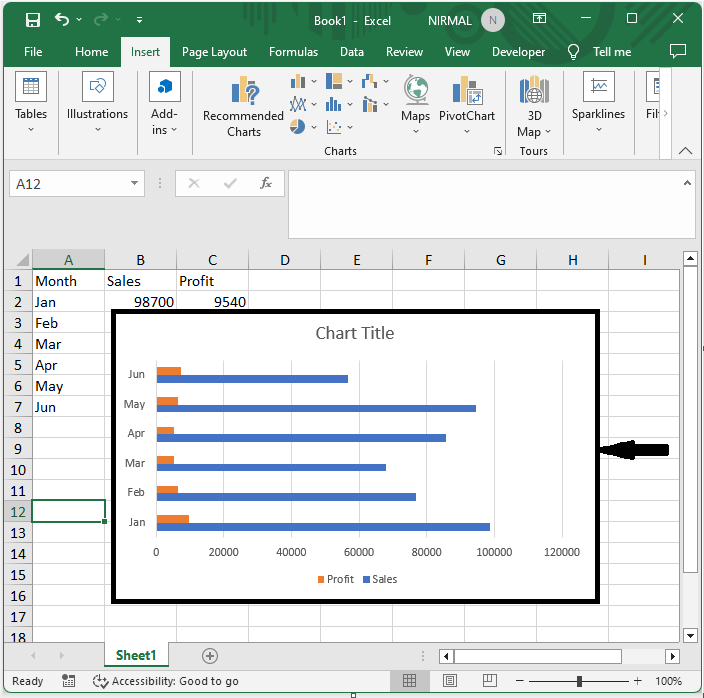
Step 2
Now right-click on any series and select format series. Then change the plot series on the secondary axis.
Right-click > Format Series > Secondary Axis.
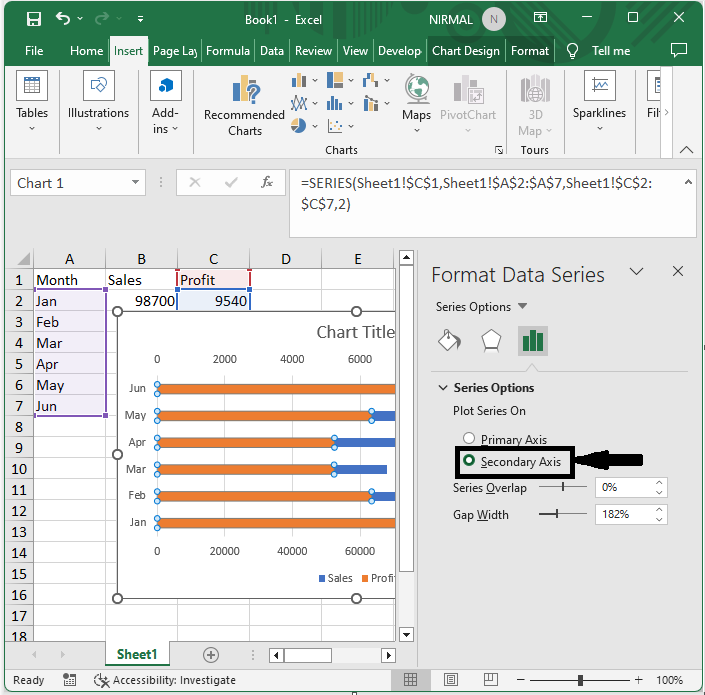
Step 3
Then right-click on the secondary axis and select format axis, set the maximum and minimum values to 5000 and -5000, and check the box named values in reverse order.
Right-click > Format Axis > Maximum > Minimum > Check Box.
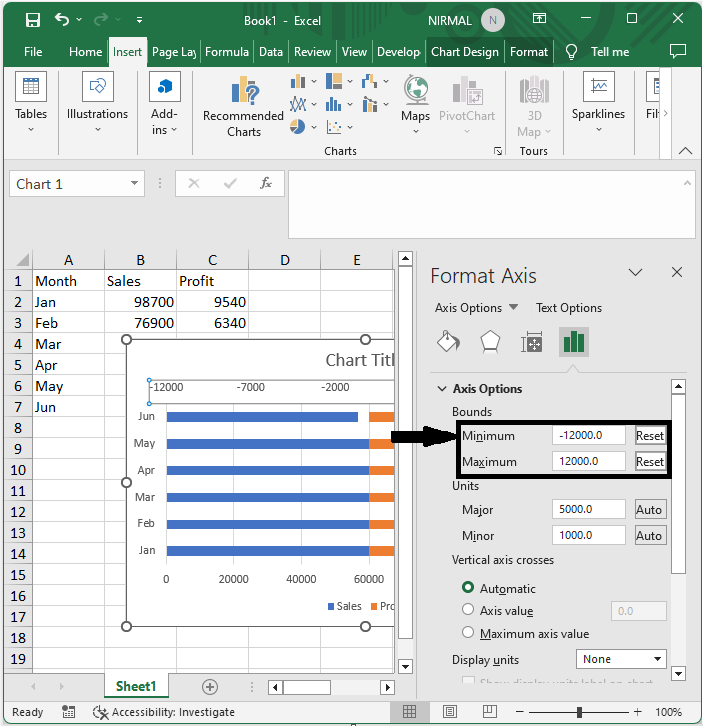
Step 4
Then right-click the x axis and select Format Axis, then enter the minimum and maximum values as entered in the above step.
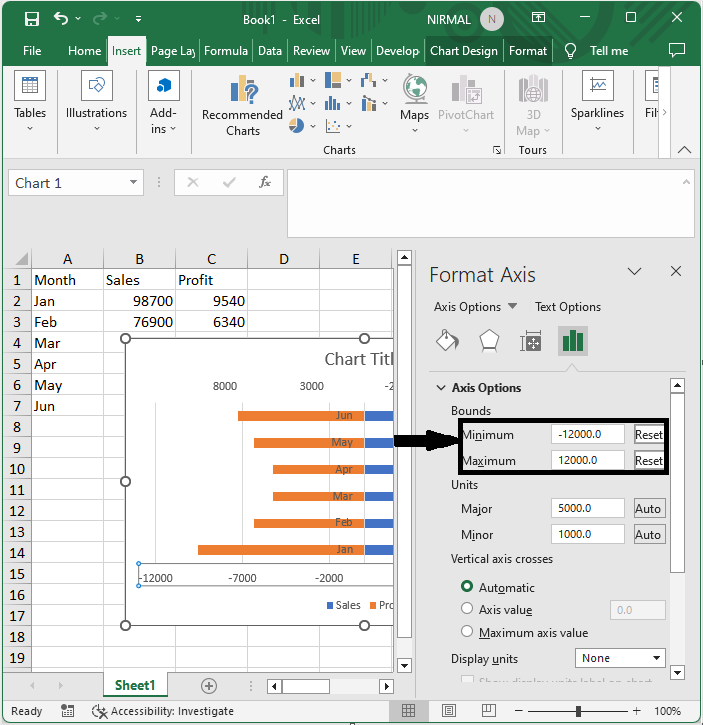
Step 5
Then right-click on the Y axis, select format axis, and change label position to Low.
Right-click > Format Axis > Label Position.
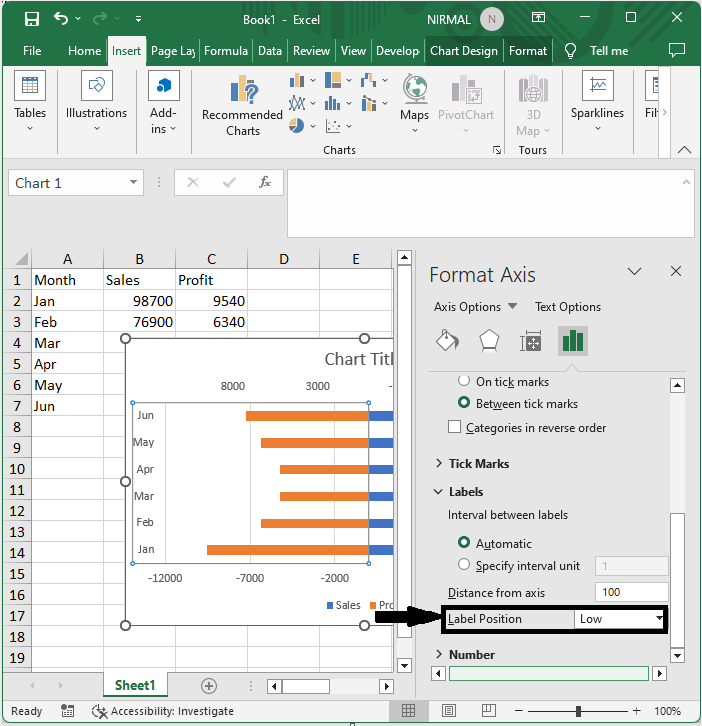
Then you will see that the bidirectional chart was successfully created.
Conclusion
In this tutorial, we have used a simple example to demonstrate how you can create a bi-directional bar chart in Excel to highlight a particular set of data.

